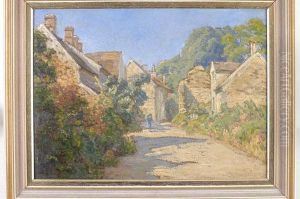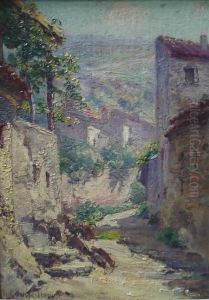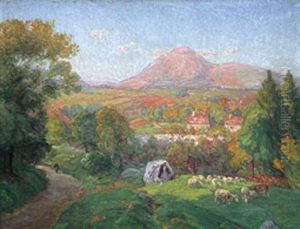Charles Jean Coussediere Paintings
Charles Jean Coussediere was a French artist born in 1819, whose work is not widely known in the mainstream art historical canon. He lived during a period in France that was characterized by significant political, social, and cultural transformations, including the revolutions of 1830 and 1848, the establishment of the Second French Empire under Napoleon III, and the eventual transition to the Third Republic.
Coussediere's oeuvre has not been the subject of extensive scholarly research, and as such, detailed records of his life and work are relatively scarce when compared to his contemporaries. Despite this, it is known that he was active in the mid-19th century, a time when the art world was evolving rapidly with the rise of movements such as Realism and Impressionism.
He would have been a contemporary of artists like Gustave Courbet and Édouard Manet, who were breaking away from traditional academic art to explore new ways of depicting the modern world. While Coussediere may not have achieved the same level of fame as these artists, his work would have contributed to the rich tapestry of 19th-century French art.
The lack of information about Coussediere may also be due to the fact that he was overshadowed by the significant artists of his time or because his work did not fit neatly into the dominant movements or styles that have been most studied by art historians. His paintings, if they have survived, could potentially be found in private collections or regional museums in France.
Charles Jean Coussediere passed away in 1899, at the close of the 19th century, an era that witnessed profound changes in the visual arts. Unfortunately, without more substantial documentation or a resurgence of interest in his work, Coussediere's contributions to art history remain obscure, and he is an example of the many artists whose lives and oeuvres are only partially understood.



